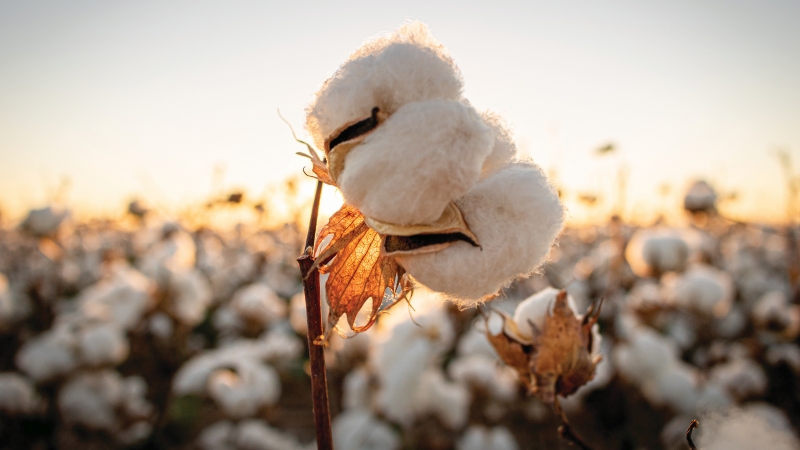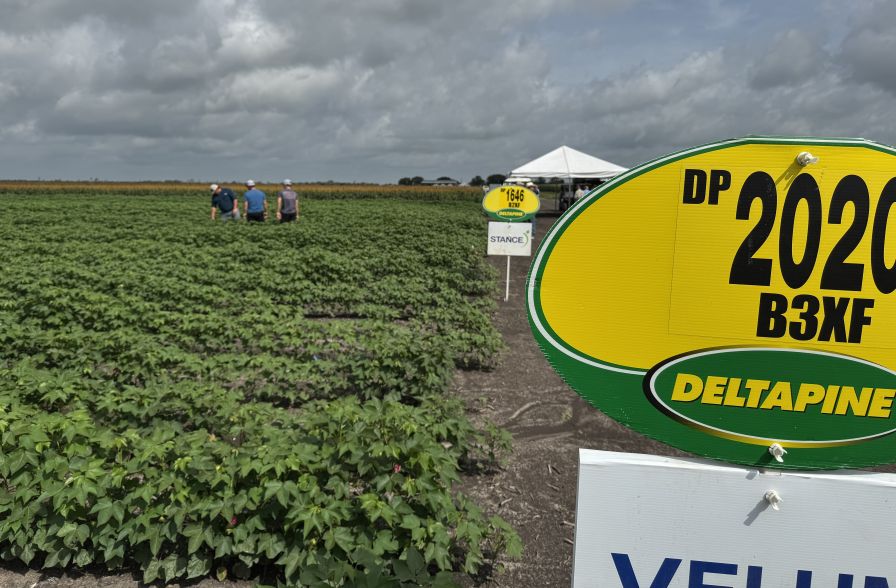Wet Conditions Continue to Slow Texas Harvest, Reduce Quality
Rain continues to cause issues for cotton growers hoping to harvest their crops around the state, according to a Texas A&M AgriLife Extension Service expert.
Dr. Gaylon Morgan, AgriLife Extension state cotton specialist, said frequent 1- to 2-inch rains have continued to delay access to fields and cool, cloudy days are not offering ideal drying conditions. He estimated 15% of cotton acres in the Upper Gulf Coast, 30-40% of acres in the Blacklands and 60-70% of cotton acres in the Brazos River Bottom were yet to be harvested.
“Not much has changed,” he said. “There have been very little cotton acres harvested in the Brazos River Bottom and Blacklands up to north of Dallas, and fiber quality continues to go down.”
Morgan said he does not know at what point harvesting those acres will not be financially feasible, and will be highly variable by farm. Hand-harvested samples taken by Morgan in the Brazos River Bottom had a loan value of 44 cents per pound due to its lower color grade, compared to a loan value of 54 cents per pound in September harvest, Morgan said.
Dr. John Robinson, AgriLife Extension cotton marketing economist, said the lower cotton value represents a 10-plus cent discount to growers per pound harvested.
“Reduced quality may not lower cotton’s futures price at all,” he said. “Rather, poor quality will be reflected in discounted cash prices to individual growers. Either way, the price of base grade cotton may not be changed much from this emerging problem.”
Reduced production may also be offset by weakening export demand, Robinson said.
So far, the price of cotton doesn’t look to be rising on the expectation of losses from drought early in the season and poor harvesting conditions late, Morgan said.
“Price spikes aren’t expected because losing those acres would not be significant in the grand scheme of things statewide,” he said. “They might be significant for individual growers, but you won’t see a bump in prices from it unless the problem continues into cotton acres in the Rolling Plains and High Plains.”
Morgan said cotton growers in the Rolling and High Plains have begun harvesting but have faced some delays, including 2-6 inches of snow recently in the northern High Plains. Producers near Tulia were moving quickly in an attempt to harvest before a weekend storm brought freezing temperatures and snow.
Specialists in the regions estimated 30-40% of the crop in the Southern High Plains and Rolling Plains were harvested. Producers were expected to gain access to fields by next week, and 40-50% of the Panhandle crop was harvested before the snowstorm. Stripping will likely extend into January due to weather.
Freezing temperatures are typically not detrimental to mature bolls and cotton lint, and many growers depend on a freeze as a natural leaf desiccant, Morgan said. But the snow represents further delays in harvest and possible quality issues.
At this point, the only silver lining from late-season rains is that much of the state’s soil moisture profile will be in good condition for the 2019 growing season, Morgan said.









